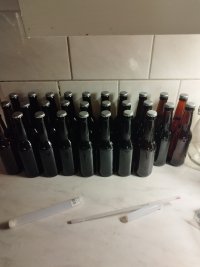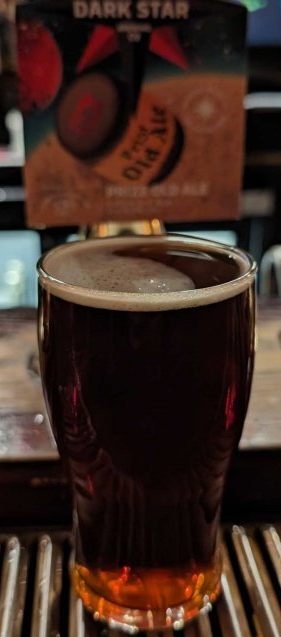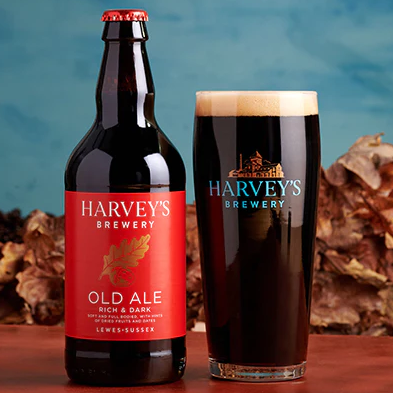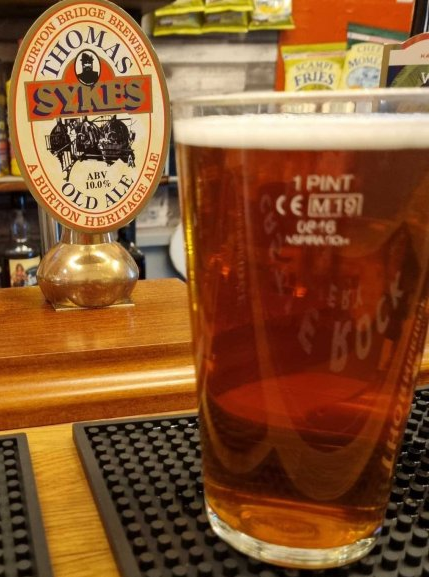The basic problem is that old ale is one of those ill-defined terms that varies through time and geography, so if you are looking for One True Definition you will be disappointed and confused.
But it's perhaps best viewed in the same light as IPA, where the modern ones can either represent the wider evolution of British beers since the 19th century, getting weaker and less bitter until you end up with Greene King IPA, or "retro" where people have gone back to the 19th century versions for inspiration but not direct copies. So there's three different kinds of beers - the "true" old ales (high ABV, aged in wood with noticeable contributions from bacteria and wild yeast) are virtually extinct, about the only mainstream example left is the newly revived Gale's Prize Old Ale (even if it only dates back to 1923;
Martyn Cornell has written two
nice articles which between them give a pretty good recipe, and the
2023 iteration recently went on sale) and I guess Greene King 5X. But they are beyond niche, although there's starting to be a few modern ones, Marble have
produced some after being involved in the first attempt to revive POA.
In southeast England, the evolutionary path has led to a beer called Old Ale taking the place of a dark mild in the lineups of eg Adnams (4.1% "first brewed 1890") and
Harvey's (3.6%, they even do a
dealcoholised version). But up north, old ale tends to be used for "high ABV, like in the old days"; brewed "clean" with just
Saccharomyces and may not even be dark. The BJCP would call
Thomas Sykes (10%) from Burton Bridge a golden barleywine - effectively it's a clone of Whitbread Gold Label - but it identifies as an old ale. They will sometimes put TS in wooden barrels but AIUI steel is the norm.
But try putting all that lot into a neat category like the BJCP try to do....
Well you shouldn't be classifying anything as an ESB if you want to be British about things, it's a brand not a category... Even
BJCP deprecate the term now, the 4.6-6.2% ranged 11C category has become Strong Bitter ("
In England today, “ESB” is a Fullers trademark, and no one thinks of it as a generic class of beer. It is a unique (but very well-known) beer that has a very strong, complex malt profile not found in other examples, often leading judges to overly penalize traditional English strong bitters"). Personally I think it would be helpful to refer to the other main London brewery at that level rather than Fuller's and just call it Special, which would also sort of tie in with German classification, but Young's don't exactly help things by putting
theirs in cask at 4.5% and bottling at 6.4% so I don't think that would fly.
Strong ale is another of those vague terms that gets used differently in different parts of the country so you can't really generalise. It's not helped by the advertising watchdog's unhappiness with anything that emphasises the alcohol in beer -
according to the EBCU the word "strong" was actually banned from beer advertising in the 1960s which I suspect explains why "old" started getting used as a substitute. In most of the country, "strong" can be applied to pretty much anything that is stronger than beers served on cask, where the limit is generally 4.5%-ish, 5% tops. So they tend to be seen mostly in bottle, and only on cask for special occasions, perhaps in the run-up to Christmas.
London is a bit of an exception for various reasons including functional public transport, so you get the likes of ESB as a "regular" beer at 5.5% but that's not normal in most of the country. So in Cornwall you get
Snozzell HSD described as a strong ale at 5%, Marston even call their low-carb
Resolution a strong ale at 4.7% which is pushing it a bit; but certainly up north you will see a lot of the 5-6% dark-ish beers like
Riggwelter (5.7%) described as strong ales. Whereas in Fuller's country it seems that the term only really applies to beers over the old 7.5% tax level.
So as always, you have to understand the regional variations and not try to apply a blanket definition to the whole of the UK, as it just doesn't work like that. And personally I'm a bit wary of retrofitting a style to match what is often just one or two individual beers, like how the BJCP tried to invent northern brown to accommodate Newky Brown.
View attachment 835779View attachment 835777View attachment 835778View attachment 835780



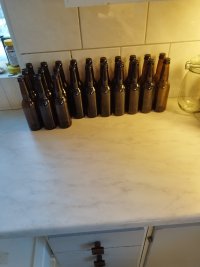









































![Craft A Brew - Safale S-04 Dry Yeast - Fermentis - English Ale Dry Yeast - For English and American Ales and Hard Apple Ciders - Ingredients for Home Brewing - Beer Making Supplies - [1 Pack]](https://m.media-amazon.com/images/I/41fVGNh6JfL._SL500_.jpg)













